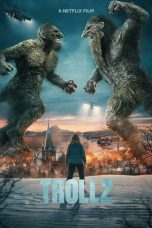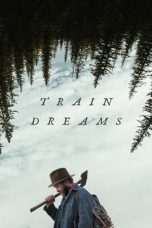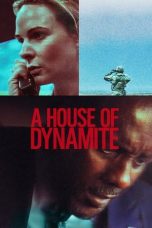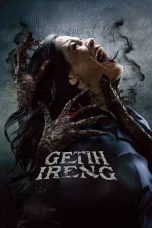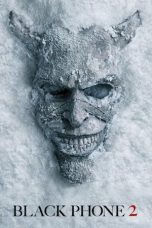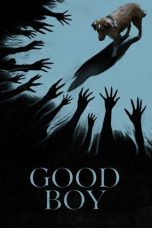After Hours (1985) Movie Review: A Surreal, Dark Comedy Adventure
Introduction
Martin Scorsese’s “After Hours” (1985) is a unique blend of dark comedy and surreal adventure, showcasing the director’s versatility outside of his more famous crime dramas. With a taut narrative and a series of bizarre, escalating events, the film delivers an unforgettable nightmarish journey through New York City. This review will explore the film’s plot, performances, direction, and lasting impact while also providing information on where to stream or purchase “After Hours” in America.
Plot Overview
The film follows Paul Hackett (Griffin Dunne), a lonely word processor in Manhattan who craves a break from his monotonous life. One evening, he meets Marcy (Rosanna Arquette) at a coffee shop, and after a brief, intriguing conversation, she invites him to her Soho apartment. What starts as a potential romantic encounter quickly spirals into a chaotic and surreal night.
Paul encounters a series of eccentric and increasingly hostile characters, including Marcy’s odd roommate Kiki (Linda Fiorentino), a paranoid bartender named Tom (John Heard), and a neurotic waitress, Julie (Teri Garr). As Paul desperately tries to find his way back home, he becomes entangled in a series of misunderstandings and dangerous situations, turning his night into an absurd, Kafkaesque nightmare.
Performances and Direction
Griffin Dunne’s portrayal of Paul Hackett is a masterful blend of bewilderment, frustration, and mounting desperation. Dunne captures Paul’s everyman quality, making his descent into the nightmarish underbelly of New York both relatable and engaging. His performance anchors the film, providing a consistent emotional thread through the surreal events.
The supporting cast is equally strong, with Rosanna Arquette delivering a memorable performance as the enigmatic Marcy. Linda Fiorentino’s portrayal of Kiki is eccentric and unpredictable, while John Heard and Teri Garr add depth and humor to their respective roles. Catherine O’Hara also stands out as Gail, an ice cream truck driver who adds another layer of absurdity to Paul’s night.
Martin Scorsese’s direction is precise and energetic, creating a sense of escalating tension and surrealism. His use of tight close-ups, quick cuts, and dynamic camera movements heightens the film’s sense of disorientation and urgency. Scorsese’s ability to blend dark humor with suspenseful storytelling makes “After Hours” a unique entry in his filmography.
Cinematography and Visual Style
The film’s cinematography, by Michael Ballhaus, captures the nocturnal landscape of New York City with a mix of gritty realism and surreal exaggeration. The use of shadow and light, coupled with the claustrophobic framing, creates an atmosphere of unease and unpredictability. The visual style enhances the narrative’s surreal quality, making Paul’s journey through Soho feel both nightmarish and vividly real.
The set design and locations add to the film’s unique aesthetic, with each new setting introducing a distinct and bizarre element to Paul’s night. From Marcy’s eclectic apartment to the dark, winding streets of Soho, the visual elements work in harmony with the film’s tone and pacing.
Music and Soundtrack
The film’s soundtrack, featuring Howard Shore’s score, underscores the tension and absurdity of Paul’s journey. The music shifts from eerie and suspenseful to whimsical and chaotic, reflecting the unpredictable nature of the narrative. The use of diegetic music, such as jukebox tunes and ambient sounds of the city, further immerses the audience in Paul’s surreal experience.
Themes and Impact
“After Hours” explores themes of isolation, urban paranoia, and the unpredictable nature of city life. The film’s depiction of Paul’s descent into a chaotic and surreal nightmare serves as a commentary on the fragility of order and the thin line between normalcy and madness. Scorsese’s ability to balance humor with a sense of existential dread adds depth to the film’s exploration of these themes.
The film’s unique blend of dark comedy and suspense has earned it a cult following, influencing subsequent filmmakers and solidifying its place as a standout entry in Scorsese’s body of work. Its exploration of the bizarre and the mundane continues to resonate with audiences, making it a timeless piece of cinema.
Streaming and Rental/Purchase Options in America
For those looking to experience or revisit this surreal adventure, “After Hours” is available on various streaming platforms in America:
- Amazon Prime Video: The film can be rented or purchased in both SD and HD formats.
- iTunes/Apple TV: Offers the film for rent or purchase, with options for SD and HD viewing.
- Google Play Movies & TV: Available for rent or purchase in multiple formats.
- Vudu: Users can rent or buy the film, with options for different video qualities.
- YouTube Movies: Provides rental and purchase options, allowing for easy access across devices.
Conclusion
“After Hours” (1985) is a captivating dark comedy that showcases Martin Scorsese’s skill in blending humor, suspense, and surrealism. With its stellar performances, particularly by Griffin Dunne, and its unique visual style, the film offers a nightmarish yet entertaining journey through the chaotic underbelly of New York City. Whether you’re discovering it for the first time or revisiting it, “After Hours” is a must-watch for fans of Scorsese and those who appreciate offbeat, darkly comedic cinema. Stream or purchase this intriguing film today and immerse yourself in Paul Hackett’s unforgettable nocturnal adventure.



